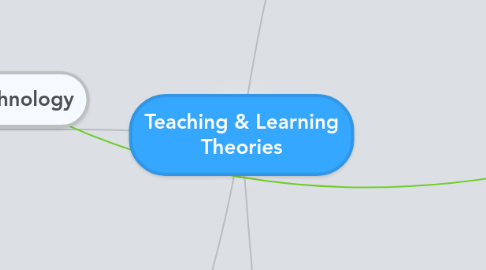
1. Technology
1.1. Media Ecology
1.1.1. Different forms of media are like ecological environments
1.1.2. How media impacts what we do
1.1.3. Media assigns roles and rules for what to do
1.1.4. Implications are implicit and informal
1.1.5. How interactions with media impact quality of life and chance of survival
1.1.6. As media usage grows in schools, students and educators must find their niche and society must learn how education and media can coexist.
1.2. SCOT
1.2.1. Social Construction of Technology
1.2.2. Must discuss the criteria for improving technology
1.2.3. Different social groups have different perspectives regarding the meaning of technology.
1.2.4. Used to analyze the success and failure of new technology
1.2.5. Users and producers of technology can be divided into subgroups, and non-users of technology also form a group
1.2.6. Different interpretations can lead to conflicts about technology
1.2.7. Teachers and students are part of the subgroup of technology users. As such, both perspectives can impact the future of technology.
2. Philosophy of Teachnology
2.1. One's personal ideas about how technology should be used in the classroom
3. Learning
3.1. Connectivism
3.1.1. Building a network to help with tasks
3.1.2. Restricting connections = restricting learning
3.1.3. Ability to make and see connections
3.1.4. i.e., Facebook, bookmarking, Google
3.1.5. Criticism: socialization shouldn't be a goal of education
3.1.6. Teacher role: directing learners to sources of knowledge and helping them understand it (i.e., the "map provider")
3.1.7. Diversity is important.
3.1.8. The end goal is to "do something" by learning, and learder must connect old and new knowledge.
3.2. Constructivism
3.2.1. Mind is a network of knowledge
3.2.2. Previous knowledge and experiences should be built upon and developed.
3.2.3. Learning should not be a passive activity.
3.2.4. Teacher role: providing tools to develop learning and supporting students' constructions of their own learning.
3.2.5. Applying knowledge to real-world problems and finding solutions
3.2.6. i.e., Scratch, Lego Robotics, Webquests
3.2.7. Criticism: too complex, difficult to assess, compromises the active role of the teacher, elitist, "tyranny of the majority"
3.2.8. Requires students to reflect on their knowledge and learning activities.
3.2.9. Allows for multiple intellegences, inquiry and project-based collaborative learning.
3.3. Behaviourism
3.3.1. Stimulus, response, reinforcing stimulus
3.3.2. Reinforcements strengthen the response, making it more or less likely to occur again.
3.3.3. Positive and negative reinforcements, as well as punishments and extinctions are important.
3.3.4. Kearsley's fundamental principles: Positive reinforcement results in repeated bahaviours, small blocks of learning are most effective, and secondary conditioning must be acknowledged.
3.3.5. i.e., Math Blasters, iClickers, BrainPOP
3.3.6. Repetition is the key to memory
3.3.7. Teacher role: Providing reinforcements and stimulus, very direct role
3.3.8. Criticism: over-simplistic, idealized,
3.3.9. Behaviour and learning is influenced by external factors
3.4. Cognitive Load Theory
3.4.1. Brain can only remember seven disconnected items at a time
3.4.2. Overload can occur when the brain is forced to process too much information too quickly.
3.4.3. Long term memory is unlimited and can hold many schemas (memory structures)
3.4.4. Brain can learn best in three ways: Repetition, meaningful groups of information, and information landscaping
3.4.5. Explains the limits and abilities of human consciousness and memory
3.4.6. Three types of cognitive memory: germane, intrinsic, and extraneous
4. TPACK
4.1. Technology Knowledge
4.1.1. Does the tool fit the task?
4.1.2. Knowledge about available tools
4.1.3. Being able to use and adapt technology to lessons effectively.
4.2. Pedagogy Knowledge
4.2.1. Are the tasks well-suited?
4.2.2. Practices and methods of teaching and learning.
4.2.3. Lesson-planning, assessment, learning theories
4.3. Content Knowledge
4.3.1. What do the students need to know?
4.3.2. Knowledge about the subject matter to be taught and learned.
4.3.3. Approaches to teaching the specific subject area.
4.4. Pedagogical Content Knowledge
4.4.1. How the teacher adapts the knowledge to be taught.
4.4.2. Curriculum, assessment, reporting
4.4.3. What strategy is best for the content?
4.5. Technological Content Knowledge
4.5.1. Can this teachnology bring new knowledge?
4.5.2. Knowing how content can be applied using technology
4.6. Technological Pedagogical Knowledge
4.6.1. How does the tool fit the task?
4.6.2. How teaching and learning is impacted by technology
4.7. Technological Pedagogical Content Knowledge
4.7.1. Is the task well-balanced?
4.7.2. How technology can be used to address issues with learning and teaching
